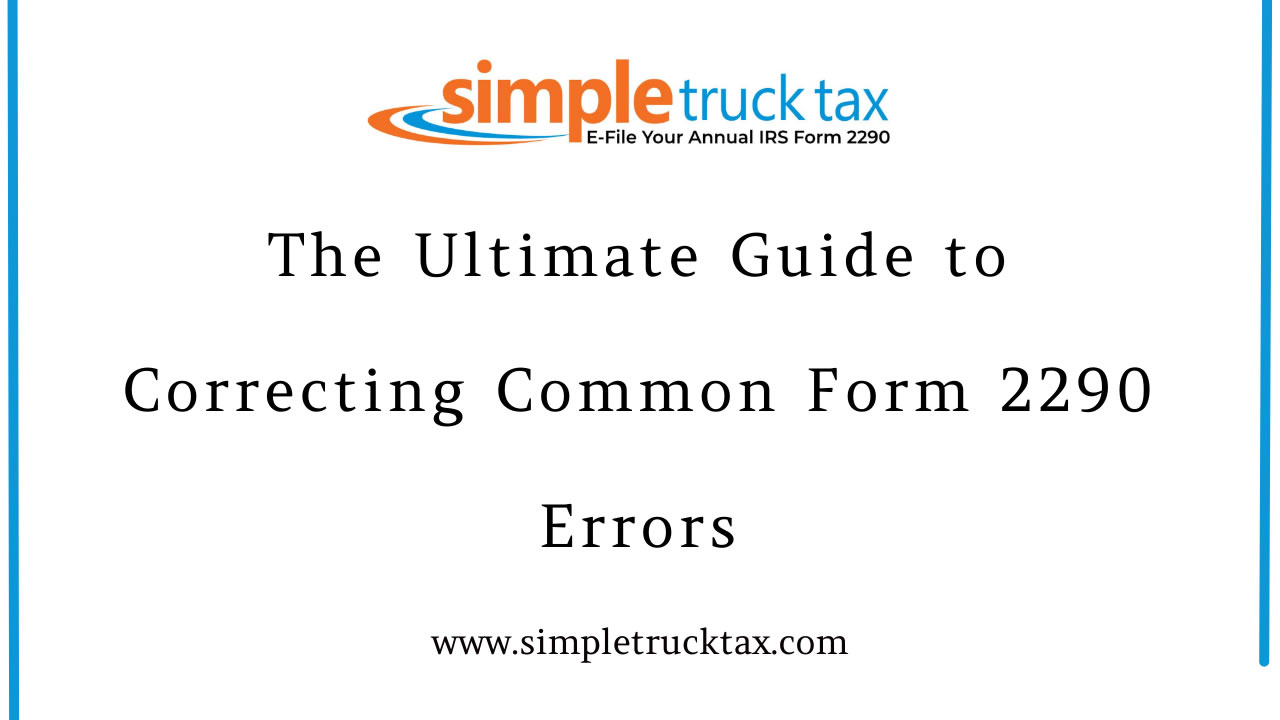
The Ultimate Guide to Correcting Common Form 2290 Errors
It can be quite tricky to file your Heavy Highway Vehicle Use Tax (HVUT), and even a minor error may result in IRS rejection or delay. Having been a reliable 2290 e-file service provider for years, we have experienced everything. The following is a list of the most frequent errors on Form 2290 and how to avoid them quickly.
Incorrect VIN (Vehicle Identification Number)
One typo in your VIN will have your return rejected. The IRS matches your tax payment against your vehicle using the VIN.
The Issue: You transposed letters and numbers (like an "O" for a "0") or omitted a character altogether. This results in an IRS rejection code and a wait to get your stamped Schedule 1.
The Fix: You will have to file a VIN correction amendment if you find a VIN error after the filing. You may do this by an e-file service, which saves you much time compared to paper filing. It's a speedy process that enables you to correct the VIN without re-paying tax.
Inaccurate Taxable Gross Weight
Your taxable gross weight determines the amount of HVUT owed. Incorrect reporting of weight can result in underpayment or overpayment of taxes.
The Problem: You choose an incorrect weight category, creating a tax owed discrepancy.
The Fix: If the weight of your vehicle goes up during the tax year, you'll need to file an amendment to owe the extra tax. Our process makes it easy to calculate the prorated tax so you only pay what you owe for the rest of the tax period.
Exceeding the Mileage Limit
If you originally claimed a vehicle suspended because you didn't anticipate it to travel over the mileage threshold (5,000 miles for most, 7,500 for farm trucks), and it did, you are required to notify the IRS.
The Solution: Not filing an amendment after going over the mileage limit will carry penalties.
The Fix: File an amendment as soon as you've gone over the limit. The deadline is the last day of the month after the month during which the limit was exceeded.
Duplicate Filing
This is when you try to file the same Form 2290 twice for the same truck for the same tax period.
The Problem: This is usually the case when a user is not certain whether their initial filing succeeded and tries to file again. The IRS will deny the second filing.
The Fix: When you receive this code, do not panic. It only indicates that your original filing was approved. You do not have to take any additional action unless you wish to file an amendment due to some other reason, like an increase in taxable gross weight or exceeding a suspended vehicle's mileage limit.
Our e-filing system is programmed to intercept these frequent errors prior to submission, saving you from an IRS rejection. We send real-time alerts for common errors and provide complimentary corrections for frequent problems such as VIN errors, so you can receive your stamped Schedule 1 in minutes.